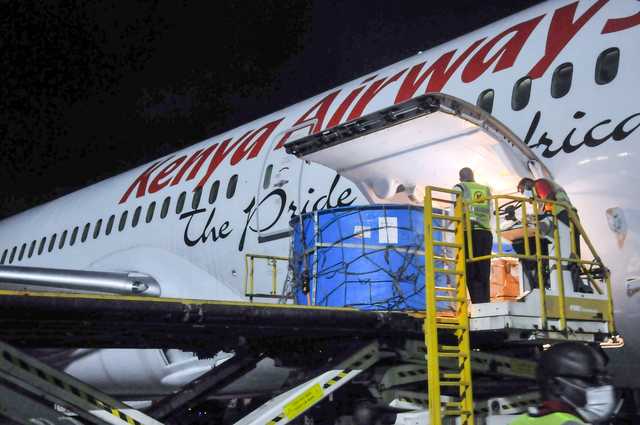The airline has been operating at 30 percent of 2019 capacity as a result of depressed demand, difficulties in controlling the virus variants, slow vaccination uptake in some of its key markets, travel restrictions and lockdowns.
Most of KQ’s revenues however come from the African routes (50 per cent) followed by long-haul flights abroad (40 per cent) while the domestic market contributed between nine and 10 per cent of the airline’s income, according to management.
Kenya Airways is still in the red despite cutting its half-year losses by 20 percent helped by increased revenues from cargo and charter flight operations. This is happening despite the ongoing cash conservation measures, including partial deferment of staff salaries and renegotiations of lease rentals and payment plans with suppliers.
The national carrier which has forecast a grim full-year performance due to the effects of the Covid-19 pandemic, made a net loss of Ksh11.48 billion ($105.32 million) in the six months to June 30, 2021, down from a net loss of 14.32 billion ($131.37 million) in the same period last year.
In March, the airline said it was in desperate need of an immediate capital injection of about $500 million to cover its short-term debts that had fallen due and shore up its depleted working capital in order to survive what it considers another difficult year (2021) threatened by the third wave of the Covid-19 pandemic.
During the six months to June 30, the airline’s total revenues declined by nine percent to Ksh27.35 billion ($250.91 million) from Ksh30.21 billion ($277.15 million) as a result of the cessation of domestic scheduled operations in April and travel restrictions/lockdowns due to a surge in virus cases.
Passenger numbers declined by 20 percent to 800,000, resulting in a 17 percent decline in passenger revenues to Ksh20.23 billion ($185.59 million), while cargo revenues increased by 60 percent due to a stronger focus on freighter operation, according to the airlines’ unaudited financial statements. Cargo-centred initiatives
KQ freight revenues improved by $270 million from cargo centred initiatives which included the conversion of two Boeing 787 craft into fully fledged freight operators last year. During the first six months of the year, cargo volumes increased by 33 per cent to 29.9 million tonnes compared with last year’s 22.5 million, a business segment that most airlines leveraged on during the pandemic when passenger business has remained low.
KQ’s overall revenue, however declined to $2.73 billion over the period, […]
